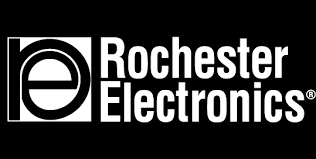Back to the Future: Intel’s 4004 CPU and the Dawn of the Micro Revolution
The legacy of the semiconductors of the past
Next up in our series of Rochester Electronics’ favorite 1970s semiconductors is Intel’s 4004 CPU.
Have you ever considered how many microcontrollers and microprocessors you interact with each day? The number of micros embedded in everyday products has exploded over the past few decades and the fact is that it’s difficult to keep track of them all. This was not always the case though, which brings up the question, just when did the use of micros in commercial products start?
One could look to 1969 when Busicom worked with Intel on the chip designs for their electronic calculators. This partnership resulted in the creation of 4004 CPU. Intel, which had only been founded a year earlier, was still a small and upcoming company. However, with the creative talents of engineers such as Ted Hoff, Stanley Mazor, Frederico Faggin, and Busicom’s Masatoshi Shima, the project had the team needed to capitalize on recent technology advancements.
The team faced many of the same challenges designers face today, only on a far different scale. The 4004 provided advancements in integration during this era, but it was not the complete solution that is found in modern micros. Intel’s choice at this time was a multi-chip design comprised of 4 separate ICs. It was based on a 4-bit CPU architecture, built using 2,300 transistors. The initial proposal had been for a 7-chip solution, but concerns over pin count, packaging, and costs, lead to a new design, bringing the count down to 4 chips and allowing the use of a more cost-effective 16-pin dual in-line package (DIP).
The design was a chipset made up of the 4001 ROM program memory, the 4002 RAM memory, the 4003 interface IC and the 4004 CPU.

Chip image © Intel

View the original product datasheet
It may be surprising given Intel’s position in today’s microprocessor market, but on completion of this effort, it was Busicom who owned the rights to the design. However, through negotiations to lower the cost of the ICs, Busicom gave up its exclusive right to the design, opening the door for Intel.
Thus, in late 1971, Intel announced the release of the MCS-4 micro-computer chipset targeting applications above and beyond calculator applications. This offering helped kickstart the use of the micro in a broad range of applications. It was soon followed with additional solutions from Intel and many other semiconductor suppliers moving to 8-bit designs and further integrations.
This should give you a little something to think about the micros you touch every day when you pick up your phone, look at your watch, get in your car, or turn on your household appliances.
We hope you enjoyed this latest installment of our series.
Stay tuned for more in the coming months!
Rochester continues to provide a wide portfolio of Intel solutions Search our inventory today!
Did you know that Rochester is a 100% authorized source for Intel’s x86 family of microprocessors? Learn more
Subscribe to Our Newsletter
Get the latest news, articles, and resources in your inbox weekly.
Manufacturers




